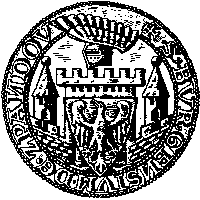
Seal from 1289
History of Spandau
The Askanier conquered the area of Spandau in the middle of the 12. Century under guidance of "Albrecht the bear". The name Spandau was mentioned as can be prove to first time in the year 1197. It must have given excavations to consequence however already much in former times a settlement here. 1232 lent the Mark counts Johann I. and Otto III. to the place the municipal law. Around 1320 with the building of the city wall was begun. 1560 on the area of a slawian castle plant the "Zitadelle" (fortress) was developed, which is still today one of the famous buildings of Spandau. In the future the area was pulled by the plague and the 30 years war. Spandau kept military people. With beginning of the reign of the first Prussian king Friedrich I. Spandau developed increasingly to the "Weapon manufacturer of Prussia". It developed in runs the time rifle, ammunition and powder factories as well as an artillery workshop and a cannon foundry. For this also immigrant workers were settled. From this time in addition, the first city plan "Intra Moenia" (1728) the first time the city detailed describes. The military meaning of Spandau as a military place obstructed however to a considerable degree the town development and shaped the face of the city. Thus to far extent around the citadel attachment plants (bastions, barriers and steady rests) were established, as well as made high editions with the establishment by buildings in this area. End 18. Century consisted the population nearly up to the half of military members. The company Siemens & Halske acquired 1897 outside of the fortress apron a large area, where it could expand. Thus developed new quarters, which is called since 1914 Siemens city. Only one began 1903 with the destabilization Spandaus, with which also the city wall was cleared away. Only the citadel and the "Fort Hahneberg" (little fortress) remained existing. Beginning 20. Century the functions of the administration more largely and it were built the new city hall (1913), which many distributes acting authorities in a building summarized. During the First World War the military companies of Spandau got again weight and the number of the persons employed rose from 10000 to 70000. After war confusions Spandau was 1920 - not without resistance - integrated into the city Berlin and as 8. Administrative district led.

Seal from 1289
In the twenties Century the military companies had to be destroyed (contract of Versaille). Many people became unemployed thereby and it developed a structure problem, which was never repaired correctly. With the seizure of power of the national socialists and their armament program the armaments industry was again developed. In the course of the Second World War the old part of town were strongly destroyed by bomb attacks. After that the Russians Berlin had conquered, became Spandau starting from in the middle of 1945 the British zone of occupation. Beyond the borders Spandau became famous by the 1947 four-power administration war criminal prison. Its status was maintained up to the death of the last prisoner, Rudolf Hess, in the year 1987. To the place important supplying and disposal mechanisms stepped like the power station Reuter, the incineration plant as well as numerous small and medium-sized enterprises to the armaments industry, so that the economic structure was not determined any longer alone by large-scale enterprises and many open spaces became for housebuilding opened. 1984 took place the extension of the underground line 7 to city hall Spandau. In the course of the regional reorganization of Berlin to 1 January 2001 Spandau kept its borders and with no other district was fused. To the youngest new buildings the extension of the railway station with the adjacent shopping centre "Spandau Arkaden" belongs south the city hall and the development of the so-called "Water City Spandau" north to the citadel. Altogether Spandau has a good mixture from living, industry and recreation areas as for example the city forest and the Havel. Spandau has now approximately 225,000 inhabitants.